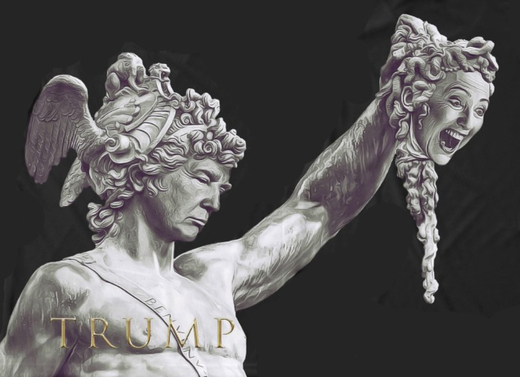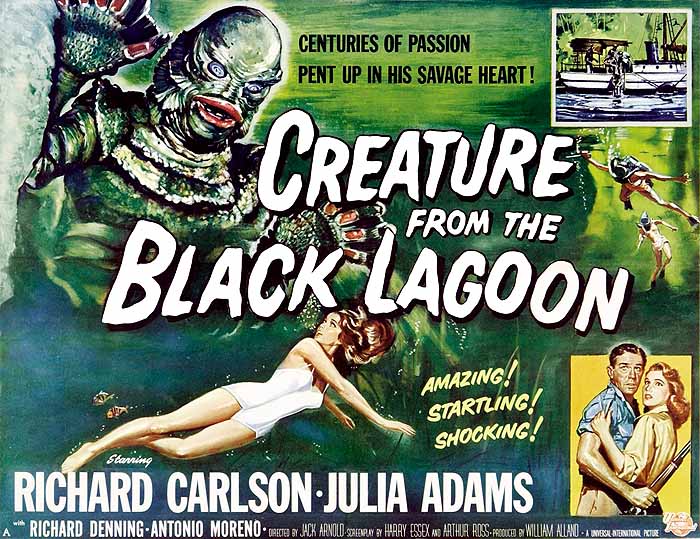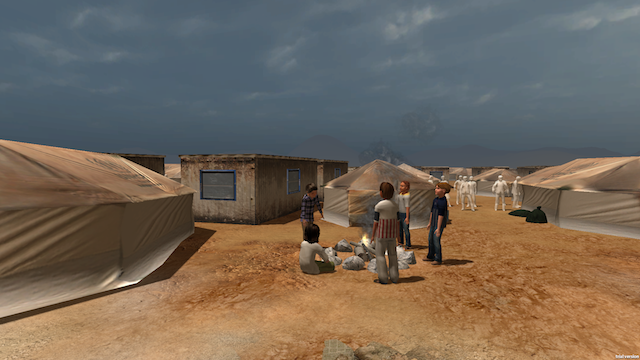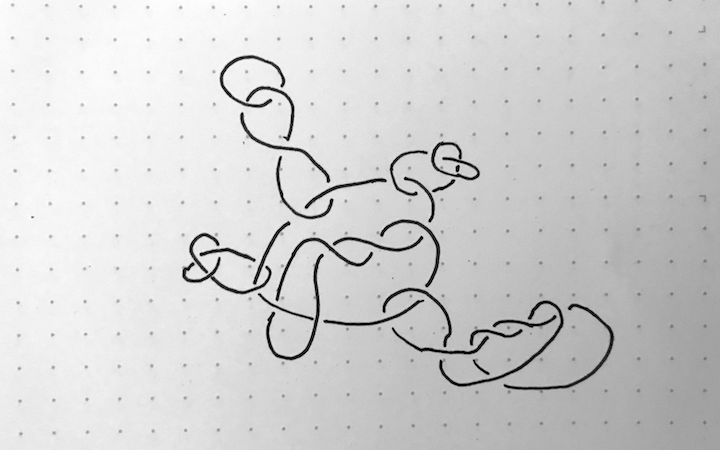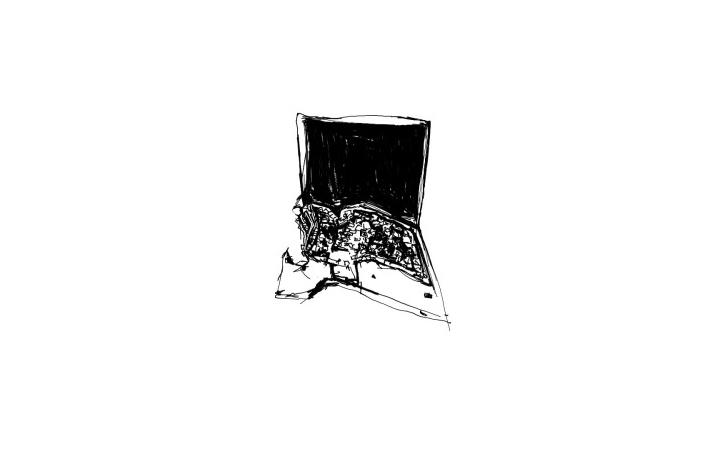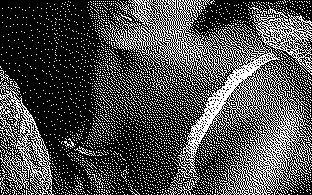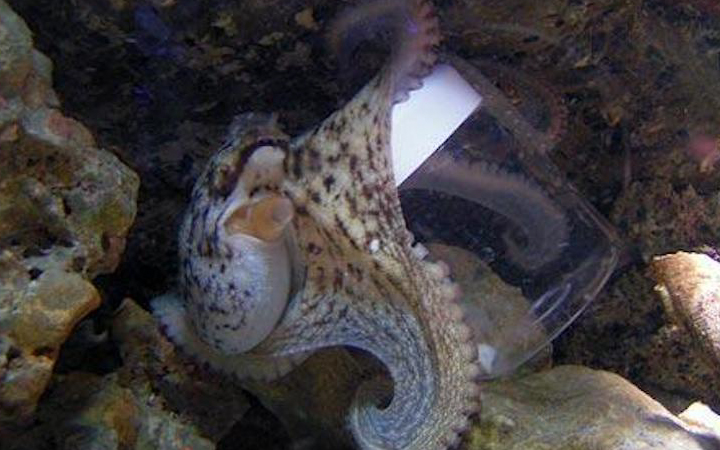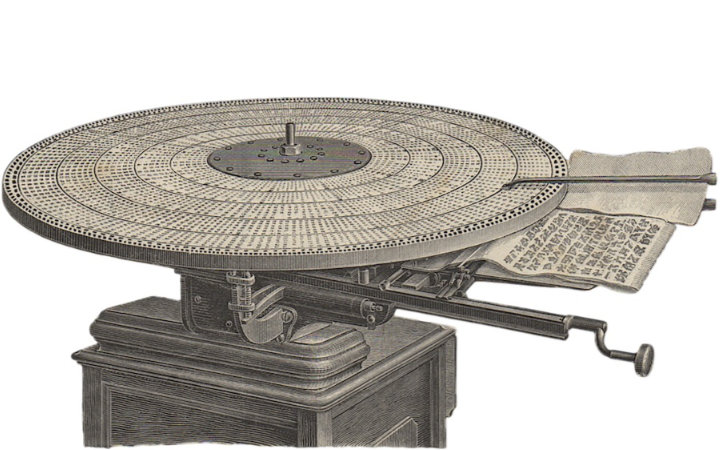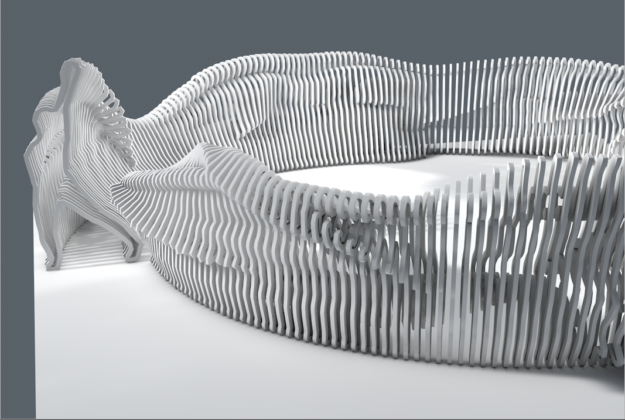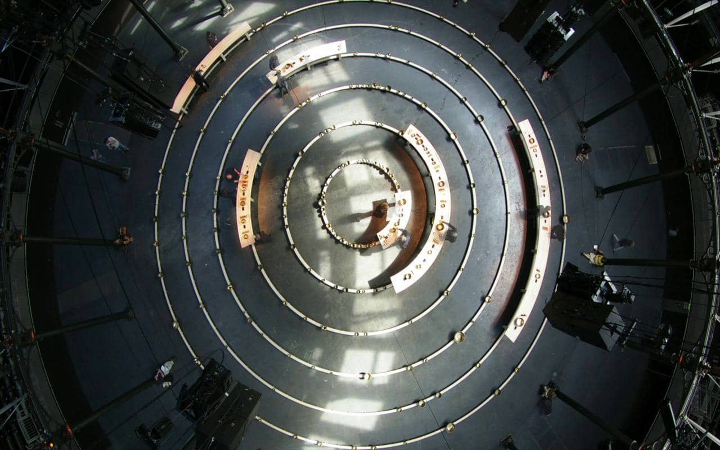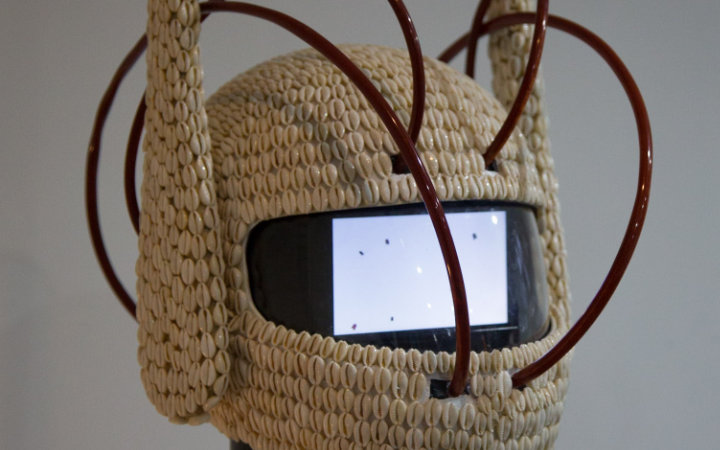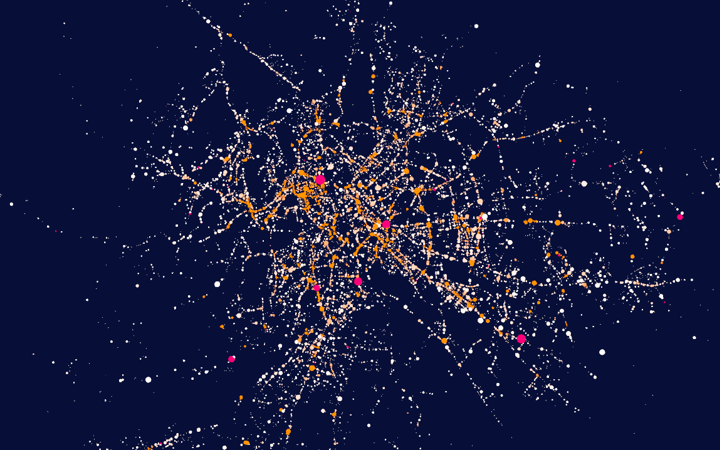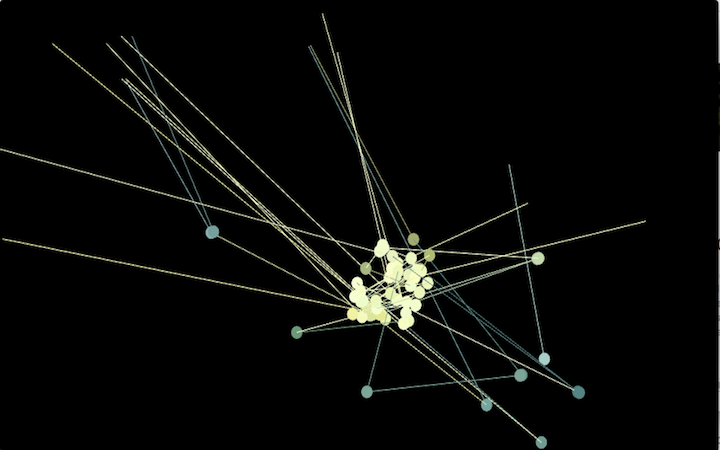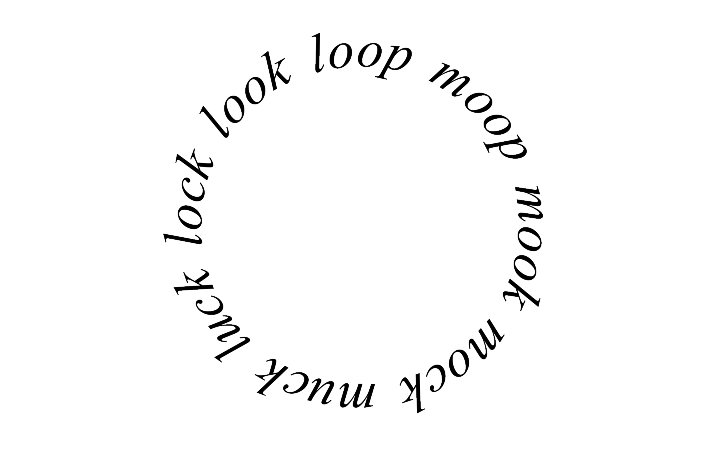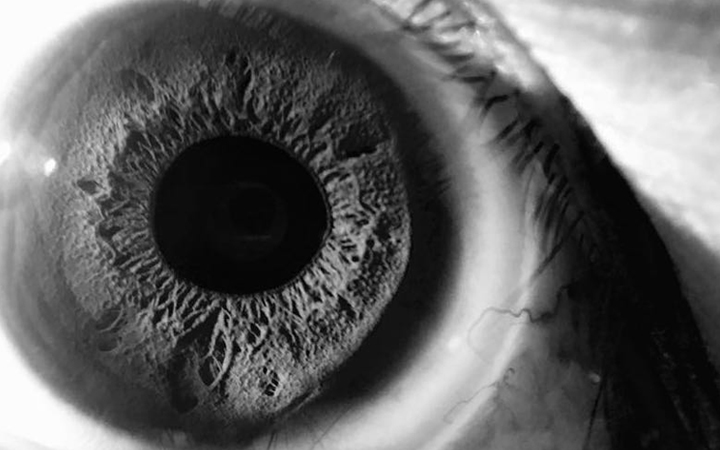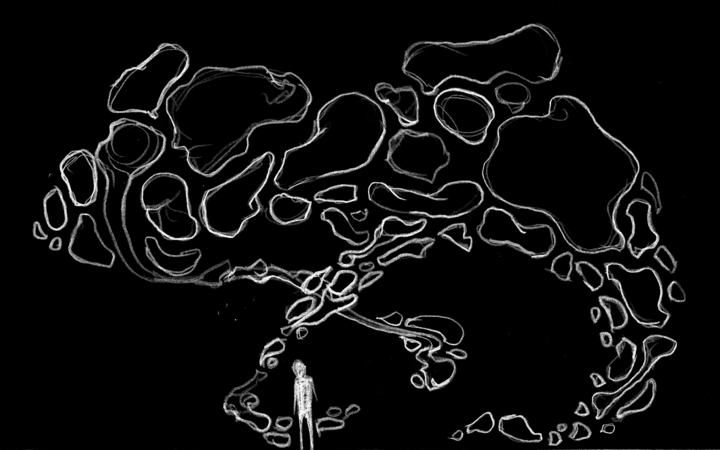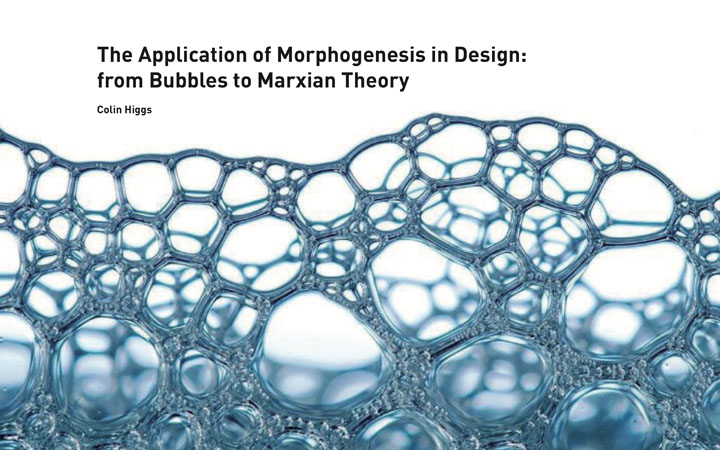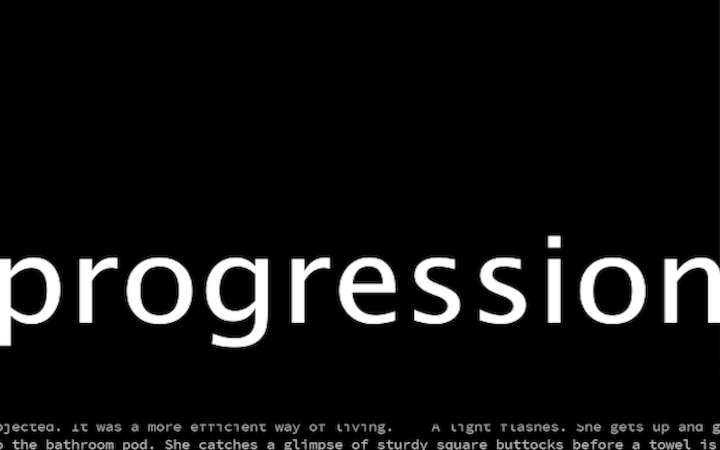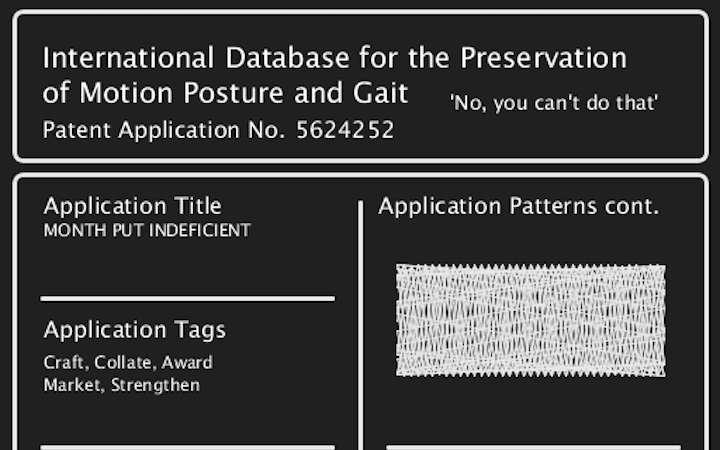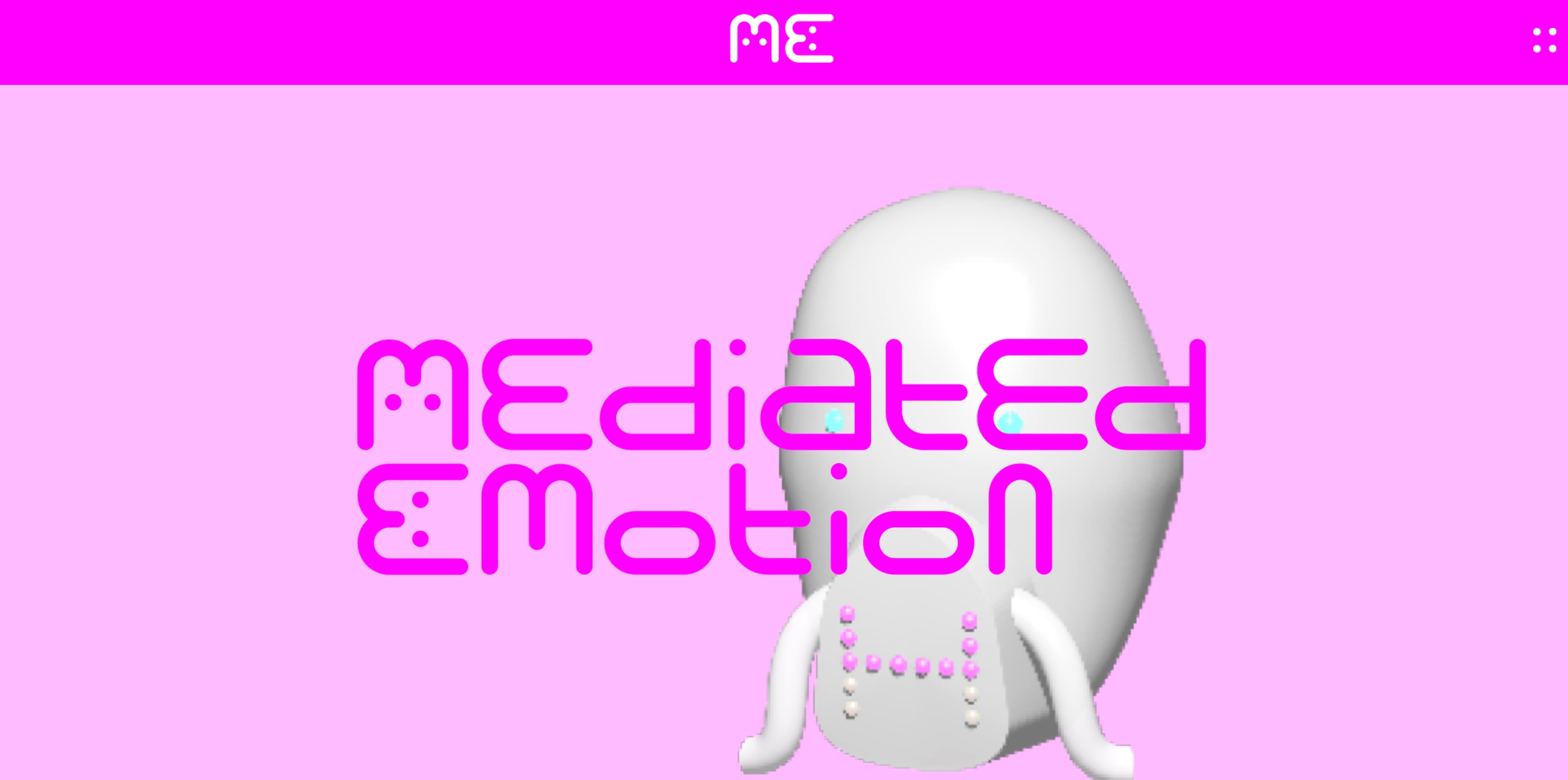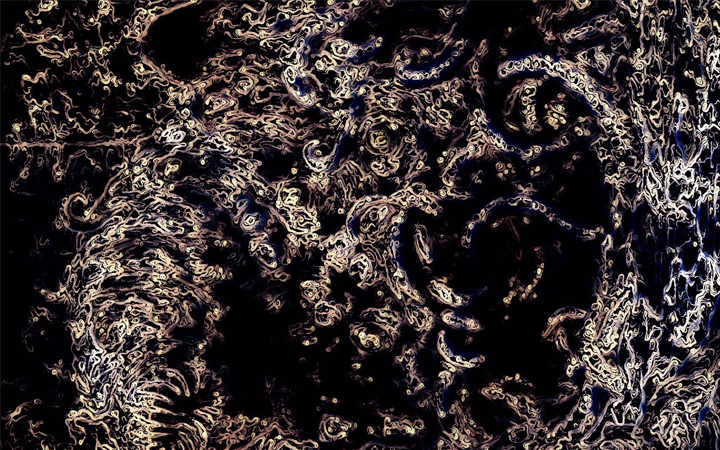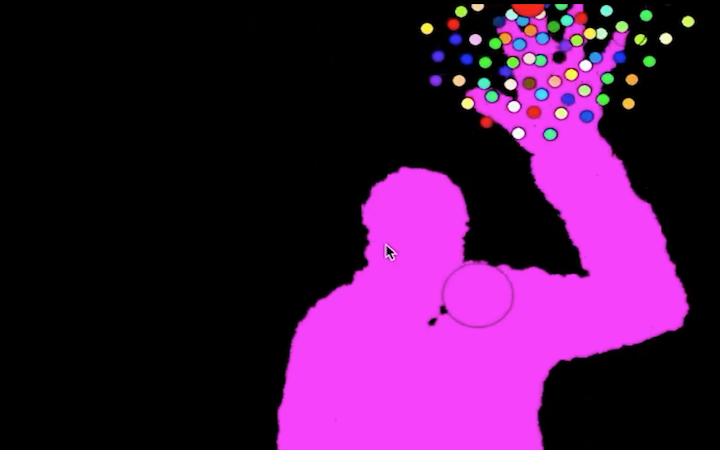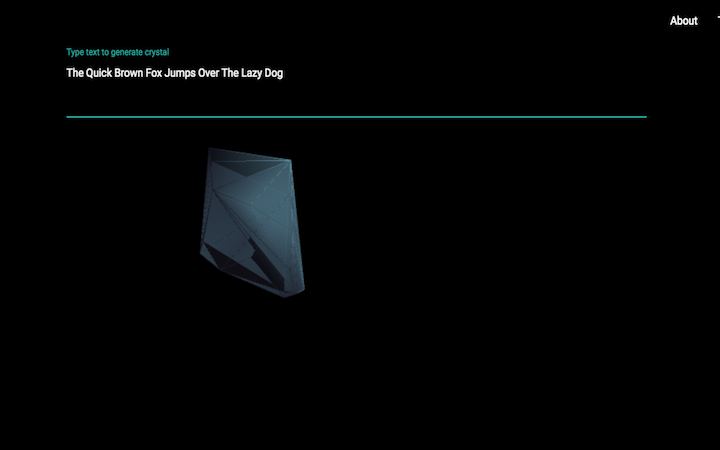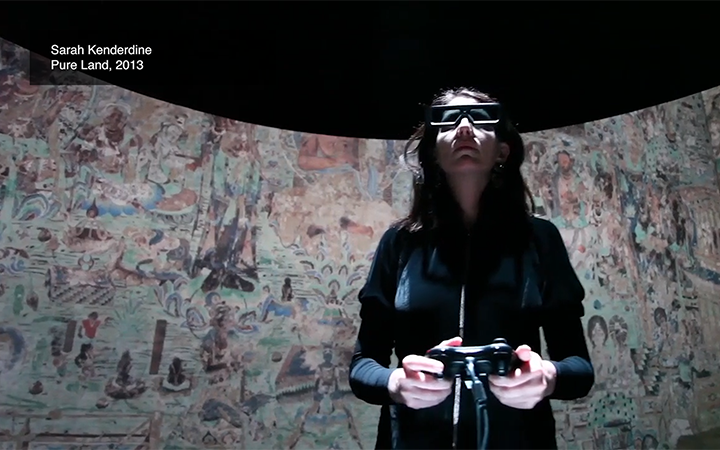Medusan and Athenian Interactions
Megan Bates
In much of Western literature, Athena represents a collection of traits which have been consistently valued and whose perceived importance can be owed to the ancient Greeks. These include wisdom, (objectivity, rationality, logic), warfare, (nationalism, power), and virginity[1]. She provides a locus for the intersection of these gendered and racialized topics. The poet Homer describes her strength and domination in warfare as partially owed to her aegis, a shield which displays The Gorgoneion: The head of Medusa.[2]
Medusa can be figured in opposition to Athena, along similar lines to what sociology professor Vicki Kirby establishes as the division of what she calls the mind/body (nature/culture). The linking of each of these to specific genders, racial identities, and nonhuman entities is established as a long tradition of dichotomising complex structures: [3]
“Nature/the body is routinely conflated with woman, the feminine, the primordial, with unruly passion and “the dark continent”- all signs of a primitive deficiency that requires a more rational and evolved presence (the masculine/whiteness/heterosexuality/culture and civilization) to control and direct its unruly potential” [Kirby, p.269]
In this essay, I will present the relationship between Athena and Medusa as a manifestation of the violence of this dualism. I will further propose that tracing how Athena has been utilised as a figuration for patriarchal ideologies, and Medusa as an icon for the subjugated throughout history, can help parse out the invisible meanings behind contemporary utilisations of their images. This will be particularly in relation to their connections to different categorisations of nonhuman entities- the technological and biological.
Both Athena and Medusa diverge from humanity in ways that are entangled with their sexuality and earthliness. Athena is a sky god, her temples built high on the acropolis. She is said to have sprung from the head of Zeus, a miracle birth without a mother. Athena Parthenos, which translates to “Athena the Virgin”, is a name she is known by, and she never had children. Her detachment from the biology of human life, particularly relating to female sexuality and childbirth, are worth considering at it relates to the way that multiple 16th century Jewish and Christian theological readings of the myth of her and Medusa describe Athena as representing rejecting Earthly pleasure and sin, the ascent to heaven, and rationality.[4],[5],[6] Mary Beard describes her access to power and esteem as relating to her masculinity:[7] “In the Greek sense [Athena] is not a woman at all.” [Beard, p.70] She explains how warfare was an exclusively male job, wisdom was a trait admired only in men, and women’s role was to have children, which Athena did not do. She would have been a hyper masculine figure. Medusa, meanwhile, departs from humanity (and femininity) at a climax of sexual violence. Ovid establishes the story of Medusa and Athena[8], writing in 43-17 B.C.E. - C.E. as:
“One day Neptune
Found her [Medusa] and raped her, in [Athena’s] temple,
And the goddess turned away, and hid her eyes
Behind her shield, and, punishing the outrage
As it deserved, she changed her hair to serpents,
And even now, to frighten evil doers,
She carries on her breastplate metal vipers
To serve as awful warning of her vengeance” [Ovid, p.36]
If we continue with Kirby’s linking of femininity, sexuality, the primitive, and nature, this myth of the rightful punishment of Medusa by Athena reflects a thread in the ideology of Western value systems which can be traced through a long history and which still influence current frameworks of power structures. “Classical traditions have provided us with a powerful template for thinking about public speech, and for deciding what counts as good oratory or bad, persuasive or not, and whose speech is to be given space to be heard.” [Beard p.70]
Caricature by Thomas Rowlandson after a design by Lord George Murray, Published on behalf of the Association for the Preservation of Liberty and Property against Republicans and Levellers, 1792.
Medusa is repeatedly used throughout history as a political tool to represent the antithesis of civilized society. She has been used more recently in multiple examples depicting female politicians.
An image created with photo manipulation software by a Trump supporter in 2016, depicting Hillary Clinton as Medusa.
Other ancient sources which involve Medusa talk at length about her appearance, particularly relating to her intermingled beauty and horror. The source of her power to turn men to stone is linked alternately to man-enticing pleasures and the terror of her monstrous form. This combined feeling of lust-repulsion seems, for many discussing the Medusa myth, to be the specific source of her power. Although intended as a warning, this perverted characteristic manifests as strength for Medusa, something which has been used in a large number of feminist analyses. The nature of this perversion can be linked to revulsion at women, blackness and queerness. When Medusa is situated she is in Western Africa [9] or in Libya [10]. The Greek historian Diodorus Siculus describes her as a member of a group called the Gorgons, a people righteously conquered by the hero Perseus. The incompatibility of this myth, of her being born to a community of snake-haired people, with that of Athena’s transforming spell speaks to the flexibility of her origins and the importance of her appearance and nature, rather than her role in Perseus’ story, even amongst ancient sources. Diodorus speaks about the Amazons, who apparently lived nearby to the Gorgons, while discussing Medusa. He describes Hercules’ motivation for his apparent conquering of west Africa as:
“it was a thing intolerable to him, who made it his business to be renowned all the world over, to suffer any nation to be governed any longer by women” [Diodorus, p.29]
There are several connections of Medusa to tales of invasion and conquest of Africa in ancient times[11]. Her character of a perverse simultaneous attraction/repulsion aligns with more recent portrayals of both the African continent and black women as the “dark continent” and “hottentot”, as Gender & Sexuality Studies theorist Jennifer Nash describes.[12] We can follow this connection between monstrosity and black bodies to a more contemporary debate surrounding Hollywood monsters reinvigorated by Guillermo del Toro’s The Shape of Water (2017), a reimagining of Creature from the Black lagoon (1954).
1954 'Creature from the Black Lagoon' poster
English professor Patrick Gonder describes how the emergence of the monster in cinema developed from a coded racism (and sometimes sexism) which inspired various visualisations of the ‘horror’ of ‘The Other’.[13] The ‘expedition-to-an-exotic-land’ trope is a common sub-plot of many Hollywood horror films such as King Kong and is remarkably similar to Diodorus Siculus’ story of Medusa. Gonder describes how the space of the monster is a stand in for white male anxieties relating to ‘The Other’. He argues that this creates a space to fantasise about racialized violence. Cinematographic depictions of Medusa inherit this heritage of monsters in Hollywood, almost always adopting the same framework of ‘terror-which-must-be-slain’. These depictions of Medusa are often violent, featuring (white, male) Perseus figures or analogues usually decapitating her. This heritage of monster depictions continues into the new media of video games, which provide an additional layer of interaction, creating a further engagement with this fantasy space. The God of War series, in particular, has been criticised for creating experiences which involve extreme violence involving hypersexualised characters[14].
God of War II (2007) Euryale’s Death scene.
Freud’s infamous psychoanalytical essay, Medusa’s Head, written in 1922, justifies this violent repulsion from Medusa by proposing that her power related specifically to the penis.[15] He links decapitation and petrification to castration and erection, respectively, and argues that this makes Medusa represent the female genitals, particularly “the terrifying genitals of the Mother” [Freud, p.85]. He describes Athena’s display of Medusa’s head as being used as a means to become unapproachable and remain virginal. Again we can see how Athena’s rejection of femininity, and particularly female sexuality, is part-and-parcel of her characterisation.
At this point, it is worth trying to untangle what Athena represents in a modern context. She is still a western icon for rational thought, aspiration, success and objectivity. These same qualities are attached to technology and the digital. Many scientific and computational instruments and processes are named for Athena:
· Athena scientific: a small publishing company specialising in textbooks on computation and programming written by professors at MIT. Of their 16 publications, all have male authors.
· The Equality Challenge Unit’s Athena SWAN charter is a motion to encourage and recognise commitment to advancing the careers of women in STEMM.
· Amazon’s Athena, a big data querying service which is advertised with the tagline: “Start querying data instantly. Get results in seconds. Pay only for the queries you run.”
· Athena is the name of the Artificial Intelligence in the videogame Overwatch.
Ideas of bodiless technology, with their aesthetics of cleanliness, absolute rationality, and power,can be connected to religious readings of Athena’s divinity and virginity. Cultural studies philosopher Luciana Parisi describes how Feminist critics have many times established the link between the aspiration of immateriality and disembodiment and a rejection of femininity[16]. Mary Beard argues that this rejection is what makes Athena a palatable powerful woman to patriarchal society, and sees the traits that she embodies reflected in many women who achieve political power in the West. Many Feminist writers have empathised with Medusa, identifying their own struggles in her story.[17],[18],[19] I feel that relationships between people of all genders have been damaged by this drive to fit a mould which rejects femininity.
However, Donna Haraway’s Cyborg Manifesto proposes a convincing counter- argument to the Feminist rejection of the ‘Cyborg’, and instead argues for breaking down boundaries between human, machine and animal.[20] I see this a proposing a relationship between Athena and Medusa rather than an overthrow or power reversal. Athena’s image has been preserved in the material of stone. Given the nature of Medusas’ power, this demonstrates to me a mythology of mutual destruction, not just of punishment and suffering. This violent dynamic between the Athenian and Medusan, the mechanical non-human and biological non-human, or, alternately, technological advancement and nature, speaks to me of our mythology for the future of the earth.
I have created a digital moss symbiont to represent collaborations and solidarity between Athenian and Medusan frames of thinking. I feel that imagining a relationship between Athena and Medusa is a way of imagining a future where humanity and the Earth can coexist. My digital moss symbiont is a sea-anemone like creature, powered by cicuits and code. It could shock in a Medusan fashion due to the electrical current which permeates it, but its interest lies in the relationship between itself and the biological life surrounding it.
Digital Moss Symbiont, 2018.
The digital moss symbiont emits 555nm light, the most vibrant colour wavelength to the human eye. Our intimate relationship with plants has affected our biology, their most reflective colours imprinted in our DNA to be favourably differentiable. The symbiont plays the game of life across its 555nm LEDs, a computer program which has inspired many projects exploring and creating digital life forms. Its organic motion is dictated by a series of simple rules which eventually settle into a lethargic equilibrium. Frequent stimulation is required for the symbiont to have an energetic life, applied by the moss or human with which it has its symbiotic relationship. The increased light levels it emits help sustain its partner so that together they can create a cooperative equilibrium.
I do not propose that an Athenian-Medusan relationship is always appropriate. Sylvia Plath’s Perseus: The Triumph of Wit over Suffering and many other emotive feminist writings speak to the terrible cruelty of ignoring the damage that Athenian masculinity/whiteness/heterosexuality does, particularly since it is often made invisible through the use of terms like ‘rationality’, ‘universality’ and ‘objectivity’. I instead suggest reframing these ideologies to be more inclusive and perhaps dilute. Seeing the rational in the feminine, the universal in nature, the objective in queerness, can seem oxymoronic through the potency of these ancient dualisms, but “You can’t easily fit women into a structure that is already coded as male; you have to change the structure. That means thinking about power differently.” [Beard, p.86-87]
Cited Works
-----
[1] Anon, 1995, ‘Athena’, Merriam-Webster's Encyclopedia of Literature, Springfield: Merriam-Webster, [online] Available at: https://books.google.co.uk/books?id=eKNK1YwHcQ4C&pg=PA81&redir_esc=y#v=onepage&q&f=false [Accessed 17 Mar. 2018] p. 81.
[2] Homer, 2003, The Iliad, translated by Lattimore, R. in: Garber, M. and Vickers, N. ed. The Medusa Reader, London: Routledge, p. 9-10.
[3] Kirby, V. 2017. ‘Natural Convers(at)ions Or, What if Culture Was Really Nature All Along?’, In: Cipolla, C. Gupta, K. Rubin, D. and Willey, A. ed. Queer Feminist Science Studies, Washington: University of Washington Press, p. 268-281.
[4] Ebreo, L. 2003, The Philosophy of Love, translated by Friedeberg-Seeley, F. and Barnes, J. in: Garber, M. and Vickers, N. ed. The Medusa Reader, London: Routledge, p. 58-59.
[5] Conti, N. 2003, Mythologies, translated by DiMatteo, A. in: Garber, M. and Vickers, N. ed. The Medusa Reader, London: Routledge, p. 62-63.
[6] Harington, J. 2003, preface to Orlando Furioso, in: Garber, M. and Vickers, N. ed. The Medusa Reader, London: Routledge, p. 67-68.
[7] Beard, M. 2017, Women & Power A Manifesto, London: Profile Books.
[8] Ovid, 2003, Metamorphoses, translated by Humphries, R. in: Garber, M. and Vickers, N. ed. The Medusa Reader, London: Routledge, p. 30-39.
[9] Diodorus Siculus, 2003, The Historical Library, in: Garber, M. and Vickers, N. ed. The Medusa Reader, London: Routledge, p. 26-29.
[10] Lucan, 2003, Medusa and the Snakes of Libya, translated by Graves, R. in: Garber, M. and Vickers, N. ed. The Medusa Reader, London: Routledge, p. 40-42.
[11] Bacon, F. 2003, “Perseus, or War” from The Wisdom of the Ancients, in: Garber, M. and Vickers, N. ed. The Medusa Reader, London: Routledge, p. 69-71.
[12] Jennifer, N. 2017, ’Black Anality’, in: Cipolla, C. Gupta, K. Rubin, D. and Willey, A. ed. Queer Feminist Science Studies, Washington: University of Washington Press, p. 102-113.
[13] Gonder, P. 2004. Race, Gender and Terror: The Primitive in 1950s Horror Films, [online] Available at: https://www.colorado.edu/gendersarchive1998-2013/2004/12/01/race-gender-and-terror-primitive-1950s-horror-films [Accessed 26 Mar. 2018].
[14] Totilo, S. 2013, She’s Sexy. Now Kill Her?, [online] Available at: https://kotaku.com/5991145/shes-sexy-now-kill-her [Accessed 26 Mar. 2018].
[15] Freud, S. 2003, Medusa’s Head, translated by Strachey, J. in: Garber, M. and Vickers, N. The Medusa Reader London: Routledge, p. 84-86.
[16] Parisi, L. 2017, ‘The Bio-Technological Impact’, in: Cipolla, C. Gupta, K. Rubin, D. and Willey A. ed. Queer Feminist Science Studies, Washington: University of Washington Press, p. 282-288.
[17] Barnes, H. 2003, The Look of The Gorgon, in: Garber, M. and Vickers, N. The Medusa Reader, London: Routledge, p. 124-127.
[18] Cixous, H. 2003, The Laugh of the Medusa, in: Garber, M. and Vickers, N. The Medusa Reader, London: Routledge, p.133-134
[19] McElroy, C. 2003, A Navy Blue Afro, in: Garber, M. and Vickers, N. The Medusa Reader, London: Routledge, p.133-134
[20] Haraway, D. 1991, ‘A Cyborg Manifesto: Science, Technology and Socialist-Feminism in the Late Twentieth Century’, in: Simians, Cyborgs and Women: The Reinvention of Nature, [online] Available at: https://web.archive.org/web/20120214194015/http://www.stanford.edu/dept/HPS/Haraway/CyborgManifesto.html [Accessed 26. Mar. 2018] New York: Routledge p.149-181.
Bibliography
-----
Garber, M. and Vickers, N. 2003, The Medusa Reader, London: Routledge
Cipolla, C. Gupta, K. Rubin, D. and Willey eds. A. Queer Feminist Science Studies Washington: University of Washington Press
Computational Art - Research and Theory Lab
term 1 projects
These are the term 1 projects for the Computational Art Research and Theory Lab by the hacker-artists of the 2017-18 cohort.
































































